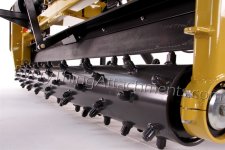ChristianHF
Member
Anyone have any experience using 6 to 8 inch schedule 40 pipe as shafting? I am working on designing a poor mans harley rake, given that the shafts typically run at only 250 rpm I am curious if this would be a suitable application for this? Would it be straight enough? I know its going to have a weld seam on the inside and balance may be compromised but I am thinking this would be minimal to non-existent at this low RPM. I have to imagine that manufacturers of these types of implements must use pipe or some kind of welded seem tube for their equipment? I have priced large diameter DOM tube and it is VERY expensive, a piece long enough for a 6 foot rake is nearly 1/3 the price of buying the rake new! Any help or experience you all could provide would be helpful. Thanks.
Chris.
Chris.


